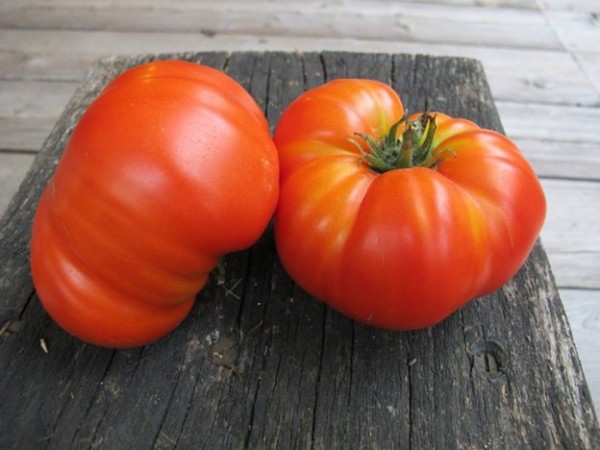
Breeders annually present new varieties of tomatoes with a medium-long growing season. The presented tomato plants are interesting, but gardeners do not always have time for experiments and I want to choose a variety that has been tested by time. In this case, the Capricosa tomato may become an ideal variety, the description, photos and characteristics of which allow you to better understand the features of growing this tomato.
According to reviews on the cultivation of Capricosa tomato, it gives a high level of yield in the greenhouse. Positive results can also be achieved in the open field, when favorable external factors contribute to this.
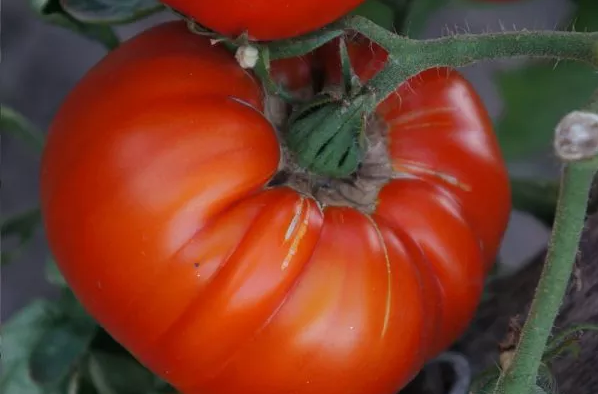
Description
This indeterminate plant, which on tall, one and a half meter bushes, can form tomatoes for a long time. Up until the moment when the temperature drops below 10 degrees. It is for this reason that farmers who grow vegetables for sale can count on the Capricosa tomato variety.
The bushes are decorated with large leaves, standard for tomatoes, the color can vary from green to dark green. This is visible in the photo. It is possible to harvest the largest crop after the stepsoning, the formation of three stems. Two stems can be formed, the result will be wonderful.
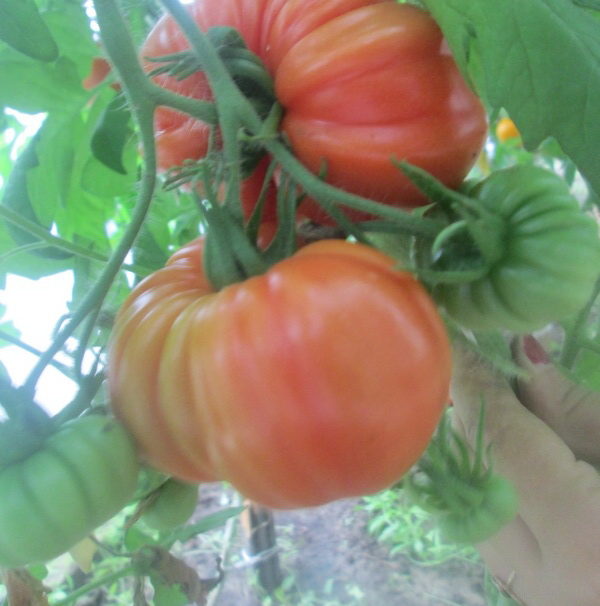
For the fruits of the tomato variety Capricosa, as described, are characteristic:
- pronounced ribbing, which is better visible in large fruits;
- sweet rich taste;
- a small number of cameras;
- high quality seeds inside;
- at the stage of biological maturity, red;
- thin, not hard peel;
- the average weight of the fetus is half a kilogram;
- round shape.
In the southern regions, gardeners can use standard methods to increase the weight of tomatoes without the risk of deterioration of taste. Tomatoes in vegetable slices and fresh salads look interesting. Fruits are often used to make juice, which will have a pleasant, pronounced aroma.
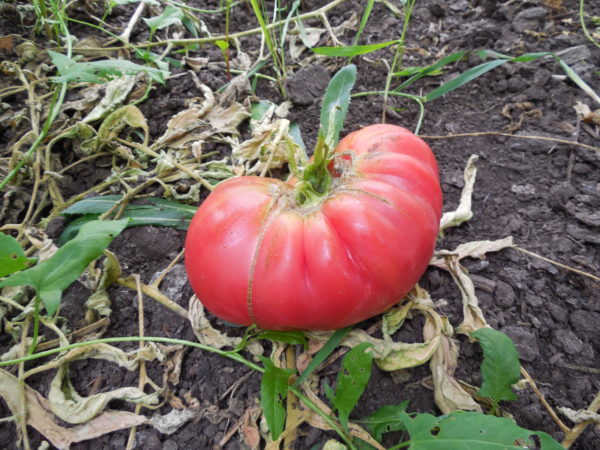
Landing
It is recommended that Capricosa planting for growing seedlings 60 days before the transplantation of a young plant.
From the time of sowing work to the complete strengthening of seedlings, about six to eight weeks pass. Sowing is carried out indoors, sowing tomatoes is in containers with drainage holes. After 5-12 days, tomato seeds should germinate.
Capricosis tomato seedlings, according to the characteristics of delicate. True leaves appear 2-3 days after the complete hatching of the culture. From this moment, the containers are transferred to the area that will be exposed to daylight. You can use artificial sources for refreshment.The soil must be kept moist and feed the plant with diluted universal fertilizer. Do not water the seedlings often.
Before planting a tomato in the open air, the sprouts must be hardened for a week. Hardening is an acclimatization process that allows a plant to break the habit of soft growing conditions indoors and adapt to outdoor conditions (or in a greenhouse) where the temperature is different. The seedlings are tender, have weak stems and need time to adapt to a new place. The hardening process is carried out in a place protected from the winds, several hours of sun per day.
Capricose plant should be transplanted into well-dug soil, adding high-quality compost. Each bush in relation to the previous one should be planted at a distance of 50 cm, which will allow the plants to develop correctly without interfering with each other. Young plants can be planted deep, for better development of the root system. Harvest days vary, but tomatoes begin to bear fruit 65 to 85 days after planting.

Care
- Watering is reduced to once a week. This will be enough until the temperature exceeds 28 degrees. If the weather is not happy with stability and the temperature drops rapidly, save the plant, maybe mulch. A reliable option is mowed, dried grass. The choice of herbs should be approached carefully, choosing healthy plants that do not have traces of pesticides.
- Choosing the best fertilizer for a tomato plant Capricosa can be overwhelming. There are many types of fertilizers, and each type has its advantages. But many gardeners continue to draw the attention of beginners to the fact that it is better to plant seedlings in high-quality soil rich in organic matter.
- A tomato plant will need a lot of compost or manure. If you plant tomatoes in a greenhouse, it is worth planning to process the soil as a few weeks before planting.
- A soil pH test is useful to know what nutrients the plant lacks. Capricosa cultivars, according to reviews, description and characteristics, thrive in soil that is slightly acidic at pH 5.5-6.8. Many gardeners use chemical fertilizers, as they are effective. They can be sold in the form of sprays, liquids or granules. Chemical fertilizers are formulated so that they are able to be quickly absorbed into the plant and at the same time provide the ideal ratio of nutrients.
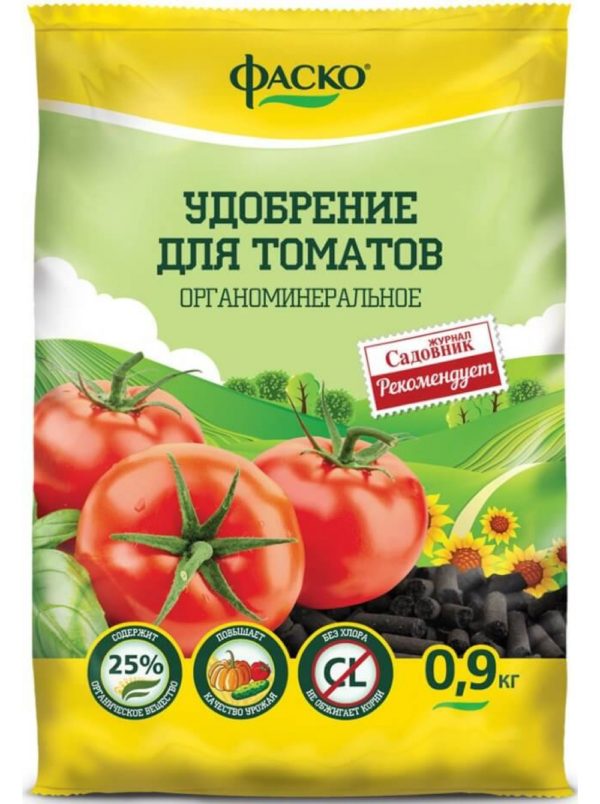
Diseases and Pests
Capricose cultivars can slowly develop and the lower leaves of the bush begin to curl, which may indicate improper watering or feeding. If twisting is accompanied by wilting, the problem may be the multiplication of harmful bacteria. You can deal with this problem using commercial means.
For young plants that have not yet begun to form an ovary, it is worth using weak solutions of chemicals or giving preference to folk remedies.
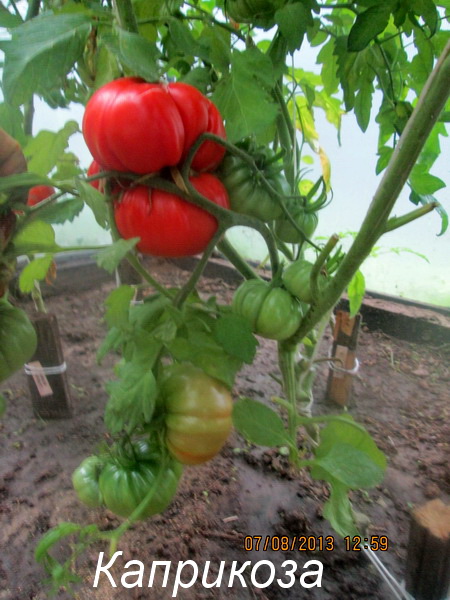
Reviews
Ivan:
“A wonderful variety that produces large fruits on the lower brushes and smaller ones on the top. Capricosa makes a perfect pasta. ”
Alexander:
“Several times I had to fight aphids, which was tiring. On the other hand, Capricosa tomato did not suffer from serious diseases, which can be considered a huge advantage. ”
Helena:
"Mandatory stepson top and sides, otherwise the yield will be unstable and after the first wave of return of ripe fruit, the subsequent ones will be insignificant."
Valery:
“Bushes are powerful, planted in open ground. Weather like previous seasons was stable, but this year it was windy. Fortunately, the Capricosa tomato plant survived all the storms well. ”
Antonina:
“I chose a greenhouse for planting. In high-quality soil, it was able to achieve impressive productivity. Only once was cause for excitement when gray rot appeared. It was possible to quickly stop the spread of the disease and maintain the crop. "
Victor:
“The culture stably brings large tomatoes, from which you get excellent seed. The fruits, when I sell fruiting for prolonged periods in warm weather, I always hear only positive reviews about Capricosis on the market. ”




 Low-growing tomatoes, without pinching: 5 of the most delicious varieties
Low-growing tomatoes, without pinching: 5 of the most delicious varieties Why tomato seedlings grow poorly
Why tomato seedlings grow poorly We grow a tomato in a shell
We grow a tomato in a shell Growing tomatoes without watering according to the method of Kazarin
Growing tomatoes without watering according to the method of Kazarin